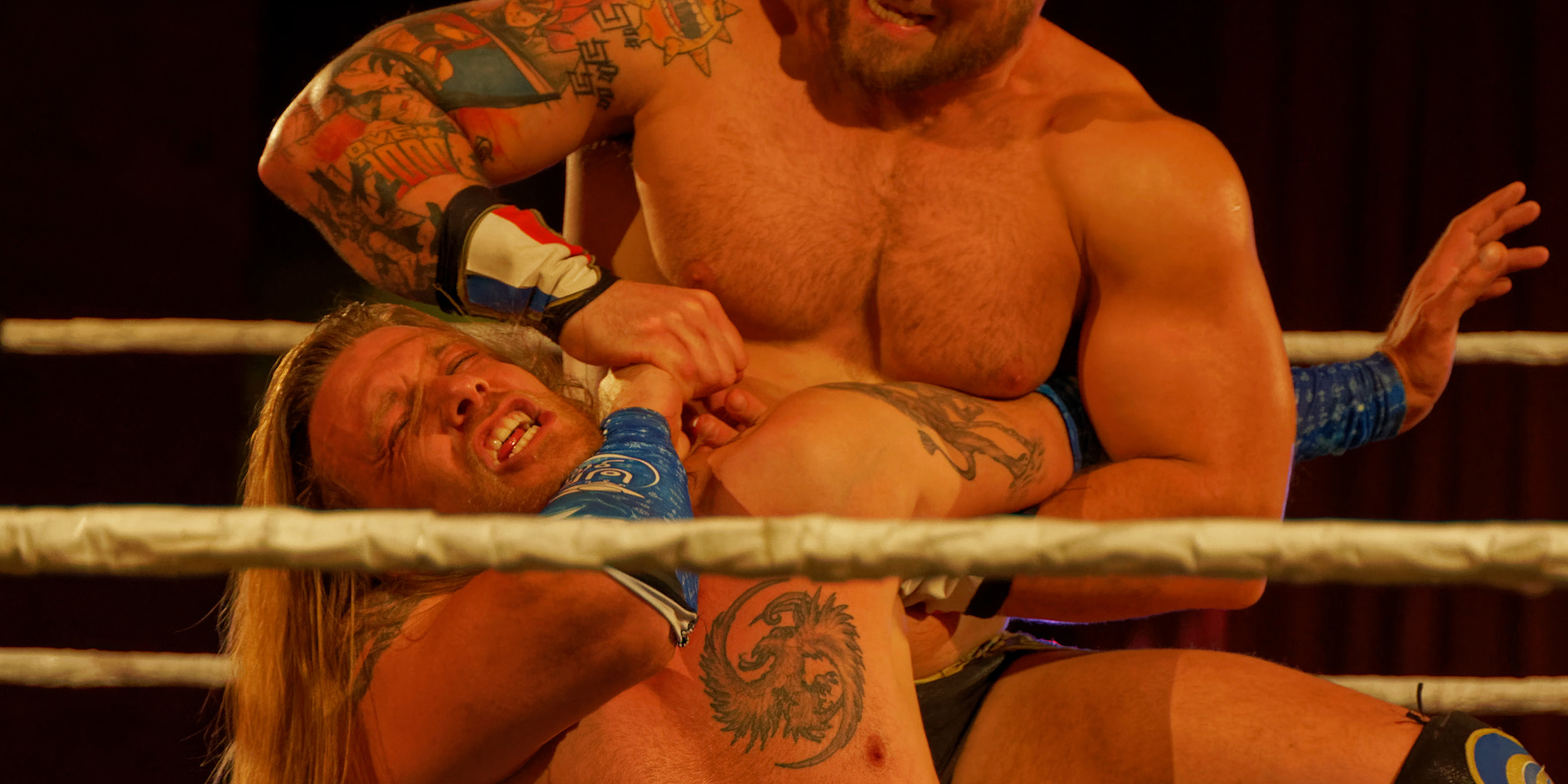Originally published 8 March 1993
My flight was delayed. I slipped into a booth at the airport lounge and ordered a beer to pass the time. Pro wrestling was on the big TV over the bar. A half-dozen men perched on bar stools watched the action, whooping it up with each eye gouge or knee to the groin.
It was the first time I had watched a pro wrestling match since I saw the wildly popular Gorgeous George perform at Memorial Auditorium in Chattanooga, Tennessee in the 1950s. We called it rasselin’ back then, down there. Along with roller derby, it was our favorite form of violence.
Now, as I watched the slam-bam theatrics on TV, I didn’t know whether to laugh or cry. On the one hand, I knew it was all fake and no one was getting seriously hurt. On the other hand, it was the illusion of hurt that evoked the biggest cheers from the guys at the bar.
What most impressed (or depressed) me about the pseudo-mayhem on TV was the mass of young boys that filled the front rows of the arena, aged 8 to 12. I wondered, what is the appeal of watching apparent thugs with names like Razor Ramon, The Undertaker, and Macho Man Randy Savage pretend to take each other apart?
And why only boys in the audience?
For that matter, why is it mainly boys that enjoy the eye-poking, head-crunching humor of the Three Stooges? Or the violent antics of the Roadrunner and the ornithcidal Coyote?
Which brings us to that age old question: Is a propensity toward violence part of the male Homo sapiens’ genetic inheritance? Is there a gene on the Y‑chromosome that makes pro-wrestling fans shriek with delight when a contestant’s head is pile-driven into the mat?
Is the huge popularity of TV wrestling spectaculars — Wrestlemania, Royal Rumble, SuperBrawl — a highly evolved way to channel innate male aggression into a socially acceptable form, in much the same way as male rattlesnakes battling for the attention of females wrestle but do not fatally bite?
My views on these matters were given initial shape by Konrad Lorenz’s On Aggression, first published in this country in 1966. The great Austrian psychologist spent a lifetime watching geese, rats, and fish snap, scratch, and bite each other. He decided that a “killer instinct” is innate in humans, and perhaps less controlled than in the most savage animals.
Most scientists now think that Lorenz overstated his case, but sociobiologists — led by Harvard’s E. O. Wilson — remain adamant that we are born with a bit of Razor Ramon in our genes. How and when these innate instincts are expressed, of course, depends upon a complex mix of social and chemical factors.
Whatever’s going on, male violence isn’t new. Anthropologists digging in a cave in Germany found a cache of 37 human skulls more than 7,000 years old. More than half of the skulls had been crushed by a blunt object, and males had more holes per skull than females. Even then, apparently, boys had a greater propensity for violence.
No one yet pretends to know how violence is encoded in the genes, or how nurturing encourages or deflates an inborn tendency toward mayhem. The nature/nurture equation is complicated in humans by a thick overlay of culture. Things are easier to sort out in less evolved species.
Russell Fernald, a neurobiologist at Stanford University, studied African cichlid fish in Lake Tanganyika. He found that bullying, violent males developed bigger brain cells in the hypothalamus, which in turn caused the fish to develop large testes and bright body colors. Wimpish, nonviolent fish had smaller brain cells, shrunken testes, and drab sand-colored scales. In cichlids, at least, biology and behavior are bound up in a complex feedback loop.
What this means for understanding the behavior of the musclebound hulks in the World Wrestling Federation is anybody’s guess. My feeling is that it’s not altogether irrelevant. These guys flex and strut and wear bright colors as if they were the meanest cichlids in the lake.
The 10-year-old boys in the front rows of the wrestling arena are almost certainly acting out a biological script. The only thing we know for sure is that we are not prisoners of our genes. Like many other boys, I somehow I survived a brief fascination with Gorgeous George and went on to become a non-violent guy with no taste for rasselin’.
Surely, in a world beset by rampant male violence we have more serious things to worry about than pro-wrestling, but I’d feel safer in a world where 10-year-old boys had heroes other than Razor Ramon and Macho Man Savage.
The 30-year-old men at the airport bar were caught up in the same complicated web of genes and nurture. Sooner or later geneticists and psychologists will sort it all out. For now, I’m willing to call it — whap! bam! slap! slam! — the arrested African cichlid fish stage of male human development.



